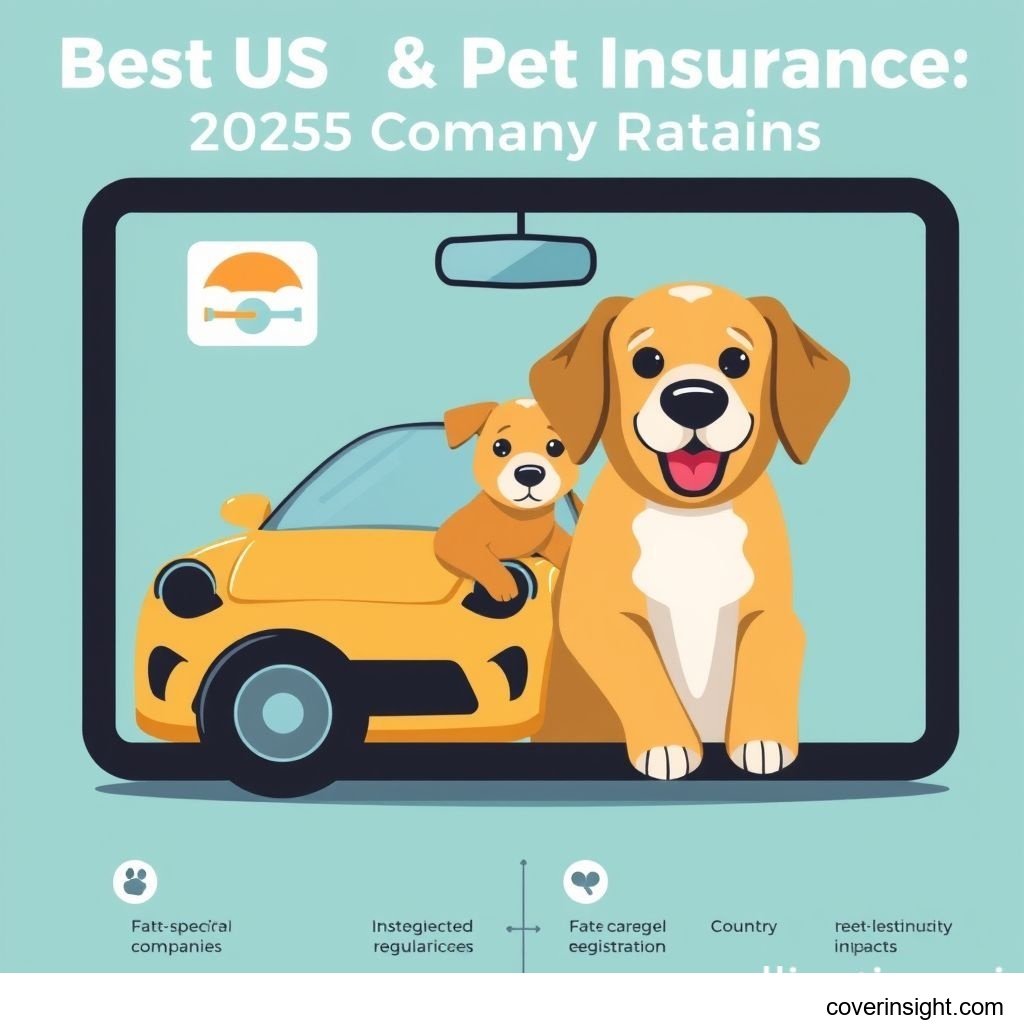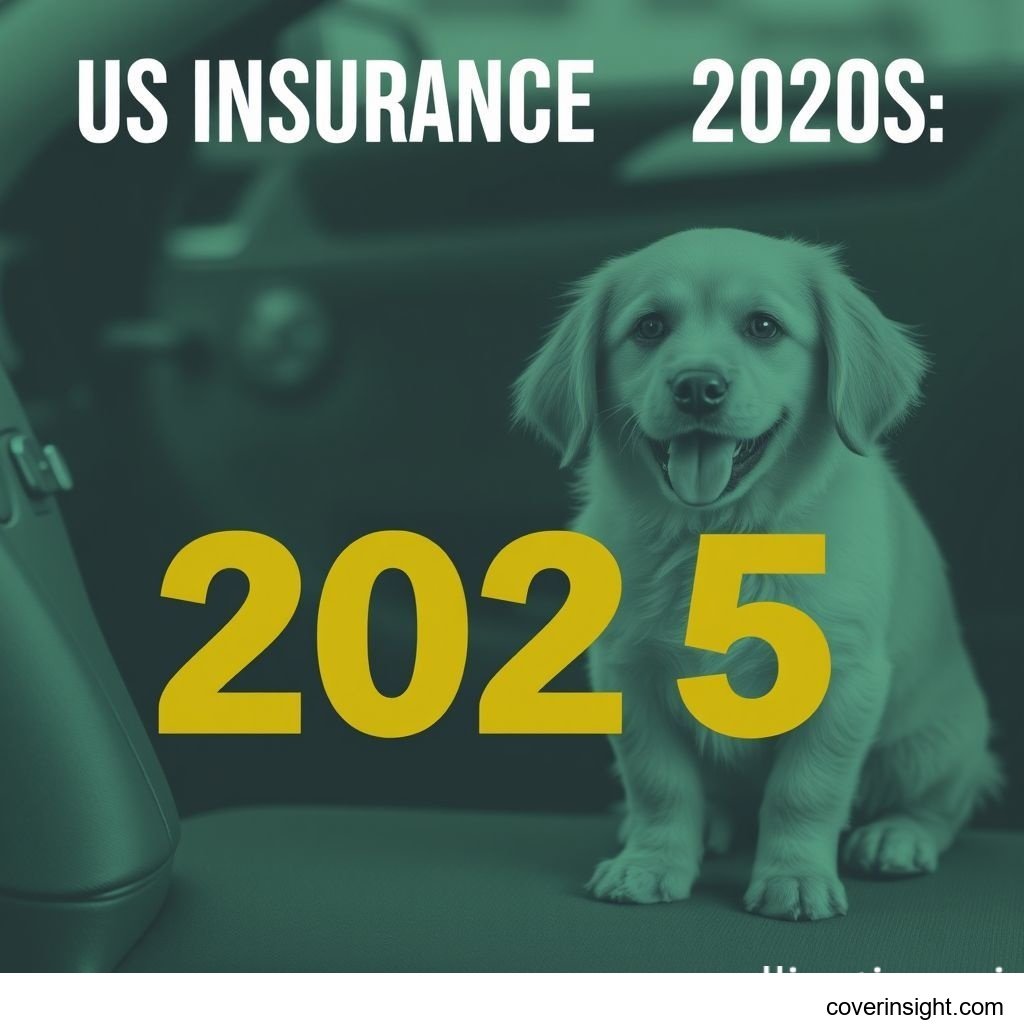Introduction
Navigating the landscape of pet insurance comparisons in the US for 2025 can feel overwhelming, yet it's a vital step for any pet owner. As veterinary costs continue to rise, having robust coverage for your beloved companion isn't just a luxury; it’s a necessity. This comprehensive guide aims to simplify the process, offering insights into what to look for, how to compare, and which providers are setting the standard in the evolving market, ensuring you make informed decisions about your pet's health and your financial peace of mind. Getting started with pet insurance comparisons early can save you significant stress and expense in the long run.
Understanding Pet Insurance Comparisons: Coverage Details
When embarking on pet insurance comparisons, understanding the nuances of coverage is paramount. Not all policies are created equal, and what one plan includes, another might explicitly exclude. This section breaks down the typical inclusions and common exclusions you'll encounter.
What’s Included in Pet Insurance Plans
Most standard pet insurance plans are designed to cover unexpected veterinary costs, providing a financial safety net for your pet's health. While specifics vary by provider and policy tier, common inclusions are:
-
Accidents: Costs associated with injuries like broken bones, lacerations, foreign object ingestion, poisonings, and car accidents. This often includes emergency care, diagnostics, surgery, and hospitalization.
-
Illnesses: Coverage for a wide range of conditions from common ailments to serious diseases. This can include:
-
Cancer treatments (chemotherapy, radiation)
-
Chronic conditions (diabetes, arthritis)
-
Digestive issues, infections, allergies
-
Ear infections, skin conditions
-
-
Veterinary Exam Fees: Fees charged by the vet for diagnosing and treating covered conditions.
-
Diagnostic Tests: X-rays, MRIs, CT scans, ultrasounds, blood tests, and lab work needed to diagnose an illness or injury.
-
Prescription Medications: Drugs prescribed by a veterinarian for covered conditions.
-
Surgeries & Hospitalization: Costs associated with surgical procedures, anesthesia, and overnight stays at the vet clinic.
-
Specialist Care: Referrals to specialists like cardiologists, dermatologists, or oncologists.
-
Alternative Therapies: Some plans may cover treatments like acupuncture, chiropractic care, and hydrotherapy when prescribed by a vet for a covered condition.
Many providers also offer optional add-ons, often referred to as "wellness plans," which cover routine preventative care. These might include:
-
Annual check-ups
-
Vaccinations
-
Flea, tick, and heartworm prevention
-
Spaying/neutering
-
Dental cleanings
Common Exclusions to Be Aware Of
While pet insurance offers broad protection, it’s crucial to understand what’s generally not covered. These exclusions are critical to consider during your pet insurance comparisons to avoid surprises.
-
Pre-existing Conditions: This is the most common exclusion. If your pet showed symptoms or was diagnosed with a condition before your policy's waiting period ended, it won't be covered. Some policies differentiate between "curable" and "incurable" pre-existing conditions, with curable ones potentially being covered after a certain period without symptoms.
-
Cosmetic Procedures: Tail docking, ear cropping, and declawing are typically not covered, as they are not medically necessary.
-
Elective Procedures: Procedures like dewclaw removal (unless medically necessary due to injury) are usually excluded.
-
Breeding & Pregnancy: Costs associated with breeding, pregnancy, whelping, or nursing are generally not covered.
-
Experimental Treatments: Any treatments or medications considered experimental or not yet widely accepted in veterinary medicine are usually excluded.
-
Food & Supplements: Prescription diets or over-the-counter supplements for general health are typically not covered unless specifically part of a covered treatment for an illness.
-
Behavioral Issues: While some comprehensive plans might offer limited coverage for behavioral therapy, severe behavioral problems often fall outside standard coverage.
-
Waiting Periods: All pet insurance policies have waiting periods before certain coverages kick in. For accidents, it might be a few days, but for illnesses, it can be 14-30 days. Cruciate ligament issues often have longer waiting periods.
Understanding these inclusions and exclusions is fundamental to effective pet insurance comparisons.
Cost Analysis for Pet Insurance Comparisons
The cost of pet insurance is a major factor in any decision. Premiums can vary widely based on several variables, making detailed pet insurance comparisons essential.
Key Factors Influencing Pet Insurance Premiums
Several elements play a significant role in determining your monthly or annual pet insurance premium. Being aware of these factors will help you understand quotes during your pet insurance comparisons.
-
Pet's Breed: Certain breeds are predisposed to specific health conditions (e.g., hip dysplasia in large breeds, breathing issues in brachycephalic breeds). Breeds prone to costly conditions often have higher premiums.
-
Pet's Age: Younger pets typically have lower premiums, as they are less likely to have pre-existing conditions or require extensive medical care. Premiums generally increase as your pet ages.
-
Location: Veterinary costs vary by region, much like human healthcare. Urban areas with higher living costs often have higher vet fees, leading to higher premiums.
-
Deductible: This is the amount you must pay out-of-pocket before your insurance coverage begins to reimburse you. Higher deductibles result in lower premiums.
-
Reimbursement Level: This is the percentage of eligible vet bills that the insurance company will reimburse after your deductible is met (e.g., 70%, 80%, 90%). A higher reimbursement level means higher premiums.
-
Annual Limit: This is the maximum amount the insurance company will pay out in a policy year. Unlimited annual limits typically come with higher premiums, while lower limits can reduce your cost.
-
Type of Plan: Accident-only plans are the cheapest, followed by accident and illness plans, and then comprehensive plans that include wellness coverage.
-
Optional Add-ons: Adding wellness plans, behavioral therapy, or other specialized coverages will increase your premium.
Smart Strategies for Saving on Pet Insurance
While pet insurance is an investment, there are several ways to manage costs without compromising essential coverage. These tips are invaluable during your pet insurance comparisons:
-
Choose a Higher Deductible: If you have an emergency fund, opting for a higher deductible (e.g., $500 instead of $250) can significantly lower your monthly premium.
-
Select a Lower Reimbursement Level: Consider if you're comfortable with an 80% reimbursement instead of 90%. The difference in premium can be substantial.
-
Opt for a Lower Annual Limit (If Appropriate): If your budget is tight, choosing a lower annual payout limit might be an option, especially for younger, healthier pets. Be aware this limits your coverage for major unforeseen events.
-
Look for Multi-Pet Discounts: Many providers offer discounts if you insure multiple pets under the same policy.
-
Pay Annually: Some companies offer a discount for paying the entire annual premium upfront rather than in monthly installments.
-
Bundle Policies: Check if your existing home or auto insurance provider offers pet insurance and if bundling can save you money. This is a common strategy to maximize savings across various types of coverage. For broader savings, explore US Insurance Home for potential bundling opportunities.
-
Consider Accident-Only Plans: If your primary concern is catastrophic accidents and you can cover routine illness costs, an accident-only plan is a much more affordable option.
-
Maintain Your Pet's Health: While not a direct premium reducer, keeping your pet healthy through good nutrition, regular exercise, and preventative care can reduce claims, potentially impacting future premium adjustments or eligibility for discounts.
How to Navigate Pet Insurance Comparisons and Choose
Making the right choice from the multitude of pet insurance comparisons requires a systematic approach. It's not just about the cheapest premium but finding the best value for your specific pet's needs.
Researching and Comparing Pet Insurance Providers
The market is saturated with options, making thorough research critical. Start by identifying reputable companies and then delve into their specific offerings.
-
Check Financial Stability: Look for companies with strong financial ratings. This indicates their ability to pay out claims. The National Association of Insurance Commissioners is an excellent resource for regulatory information and consumer complaints.
-
Read Reviews and Testimonials: Online reviews on independent platforms can offer insights into customer service, claims processing efficiency, and overall satisfaction.
-
Get Multiple Quotes: Don't settle for the first quote. Obtain at least 3-5 quotes from different providers to compare pricing and coverage side-by-side. Many comparison websites facilitate this, streamlining your pet insurance comparisons.
-
Understand the Claims Process: How easy is it to submit a claim? Do they offer direct vet pay, or do you have to pay upfront and wait for reimbursement? This convenience factor is crucial.
Deciphering Policy Types and Terms
Beyond the basic accident and illness coverage, policies come with various structures and terms that impact your out-of-pocket costs and overall benefits.
-
Deductible Types:
-
Annual Deductible: You pay this once per policy year, regardless of how many conditions your pet develops.
-
Per-Condition Deductible: You pay a separate deductible for each new condition your pet develops in a policy year. This can be more expensive if your pet has multiple issues.
-
-
Reimbursement Methods:
-
Percentage of Invoice: The most common. After your deductible, the insurer pays a percentage of the vet bill.
-
Benefit Schedule: The insurer pays a fixed amount for specific conditions or procedures, regardless of the actual vet bill. Less common but can be limiting.
-
-
Waiting Periods: Understand the specific waiting periods for accidents, illnesses, and orthopedic conditions. These vary significantly between providers.
-
Annual Limits: Choose an annual limit that you are comfortable with. Unlimited options offer maximum peace of mind, but higher premiums.
For additional insights into general insurance principles that apply across various types of coverage, including pet insurance, refer to broader Insurance Resources Global.
The Importance of Reading Customer Reviews
Customer reviews offer a practical, real-world perspective that official policy documents sometimes lack. When conducting pet insurance comparisons, pay close attention to:
-
Claims Processing Experience: Are claims processed quickly and fairly? Do customers report excessive delays or denials?
-
Customer Service Quality: Is the support team responsive, knowledgeable, and empathetic?
-
Policy Clarity: Do reviews mention unexpected exclusions or hidden fees?
-
Overall Satisfaction: Are customers generally happy with their choice, or do they express regret?
While individual experiences vary, patterns in reviews can reveal a company's strengths and weaknesses.
Top Pet Insurance Company Ratings for 2025
Evaluating top companies for 2025 pet insurance comparisons requires a consistent methodology. While specific numerical ratings are dynamic and best found on real-time comparison sites, we can outline the criteria used and general trends among leading providers.
Our Methodology for Insurance Company Ratings 2024
Our approach to discussing top pet insurance company ratings for 2024 (and extrapolating to 2025) considers several key performance indicators to offer a holistic view:
-
Coverage Breadth and Flexibility: Assessing the range of plans (accident-only, accident/illness, comprehensive) and customizable options (deductibles, reimbursement levels, annual limits).
-
Affordability: Analyzing average premium costs across various pet profiles (age, breed, location) relative to the coverage offered.
-
Customer Service & Claims Processing: Evaluating responsiveness, ease of claim submission (online portals, mobile apps), speed of reimbursement, and overall customer satisfaction.
-
Reputation & Financial Stability: Looking at industry standing, consumer complaint ratios (often available from State Insurance Departments), and financial strength ratings.
-
Perks & Discounts: Considering multi-pet discounts, wellness plan options, and other savings opportunities.
This comprehensive methodology ensures that our assessment for pet insurance comparisons goes beyond just price.
Leading Providers in 2025
Based on the criteria for insurance company ratings 2024 and ongoing market trends, several providers consistently stand out for their robust offerings and customer satisfaction. While specific rankings fluctuate, companies like Embrace, Figo, Lemonade, Pets Best, Spot, and Healthy Paws frequently receive high marks.
-
Embrace Pet Insurance: Known for customizable plans, decreasing deductibles, and strong customer service.
-
Figo Pet Insurance: Offers extensive coverage, a user-friendly mobile app, and typically higher reimbursement options.
-
Lemonade Pet Insurance: Utilizes AI for fast claims processing and offers unique bundling options with their other insurance products.
-
Pets Best: Offers a wide range of plans, including accident-only, and covers a broad spectrum of conditions with fast claim processing.
-
Spot Pet Insurance: Highly customizable plans with numerous deductible and reimbursement options, allowing for tailored pet insurance comparisons.
-
Healthy Paws: Renowned for unlimited annual benefits and excellent customer satisfaction, though generally at a higher price point.
When conducting your own pet insurance comparisons, consider these leading names as strong starting points.
Emerging Trends in Pet Insurance
The pet insurance market is dynamic, with new trends constantly emerging to enhance accessibility and coverage.
-
Telehealth Integration: More providers are integrating virtual vet consultations, offering convenience and potentially reducing unnecessary in-person visits.
-
Personalized Pricing: Advances in data analytics allow for more granular pricing, tailoring premiums to individual pet risk profiles.
-
Broader Wellness Coverage: Beyond basic vaccinations, wellness plans are expanding to include dental cleanings, preventative blood work, and even behavioral training.
-
Blockchain for Claims Processing: Some companies are exploring blockchain technology for secure, transparent, and faster claims management.
-
Focus on Preventative Care: A growing emphasis on preventative care and early detection to keep pets healthy and reduce the need for expensive treatments down the line.
Special Considerations: High-Risk Pool Options & More
Beyond the standard policy features, certain situations and pet characteristics necessitate special attention during your pet insurance comparisons. This includes understanding breed-specific vulnerabilities, coverage for senior pets, and the rare but important concept of high-risk pool options.
Addressing Breed-Specific Concerns
Different breeds come with different predispositions to certain health issues, significantly impacting pet insurance comparisons.
-
Brachycephalic Breeds (e.g., Pugs, Bulldogs): Prone to breathing difficulties, eye issues, and skin fold dermatitis. Look for policies that don't have excessive exclusions or higher premiums for these conditions.
-
Large Breeds (e.g., German Shepherds, Labradors): Susceptible to hip and elbow dysplasia, bloat, and certain cancers. Check for long waiting periods or specific exclusions for orthopedic conditions.
-
Small Breeds (e.g., Chihuahuas, Yorkshire Terriers): Can be prone to luxating patellas, dental disease, and tracheal collapse. Ensure these are covered adequately.
When seeking pet insurance comparisons, it’s vital to be upfront about your pet's breed and discuss any common breed-specific conditions with the insurer to understand coverage limitations.
Coverage for Senior and Pre-Existing Conditions
Insuring older pets or those with pre-existing conditions can be challenging, but options exist.
-
Senior Pets: While premiums will be higher, many companies still offer comprehensive coverage for senior pets, provided they don't have pre-existing conditions. Enroll early when your pet is young to lock in lower rates and avoid pre-existing exclusions as they age.
-
Pre-existing Conditions: Generally excluded. However, some companies make exceptions for "curable" pre-existing conditions that have been symptom-free for a specified period (e.g., 6-12 months). Always clarify the definition of "pre-existing" with any provider during pet insurance comparisons.
-
Bilateral Conditions: Some conditions, like hip dysplasia, can affect both sides of the body. If one side showed symptoms before coverage, the other side might also be excluded, even if symptoms appear later.
Exploring High-Risk Pool Options
The concept of high-risk pool options is more common in human health insurance, particularly before the Affordable Care Act. In pet insurance, there isn't a formal "high-risk pool" system in the same way. Instead, pets deemed "high-risk" (e.g., very old, specific breeds with severe health issues, or those with significant pre-existing conditions) may face:
-
Higher Premiums: Significantly increased costs to reflect the elevated risk.
-
Limited Coverage: Only accident-only plans might be available, or specific conditions might be permanently excluded.
-
Denial of Coverage: In some cases, a pet might be uninsurable by conventional providers if the risk is too high or the pre-existing conditions are too severe.
If your pet falls into a "high-risk" category, focus your pet insurance comparisons on companies known for flexibility, such as those that allow for customizable plans or have a more lenient stance on curable pre-existing conditions. Speaking directly with insurance agents about your specific pet's needs is crucial in these scenarios. You might also consider setting up a dedicated savings fund for veterinary emergencies if traditional insurance is unobtainable or unaffordable.
Frequently Asked Questions (FAQs) About Pet Insurance Comparisons
Here are some common questions pet owners ask when exploring pet insurance comparisons.
-
How much does pet insurance comparisons cost?
The average cost for pet insurance can range from $30-$70 per month for dogs and $15-$40 per month for cats, depending on factors like breed, age, location, and the specifics of the policy (deductible, reimbursement level, annual limit). Comprehensive pet insurance comparisons will reveal the best value for your pet.
-
What affects premiums?
Premiums are primarily affected by your pet's breed, age, location, and the policy's chosen deductible, reimbursement level, and annual payout limit. Adding wellness coverage or opting for an unlimited annual benefit will also increase your premium.
-
Is it mandatory?
No, pet insurance is not mandatory in the US. It is an optional financial product designed to help manage unexpected veterinary costs.
-
How to choose?
To choose the best pet insurance, compare multiple quotes based on your pet's age, breed, and health needs. Look at deductibles, reimbursement levels, annual limits, and understand what's covered and excluded (especially pre-existing conditions). Read customer reviews for insights into claims processing and customer service.
-
Consequences of no coverage?
Without pet insurance, you are solely responsible for 100% of your pet's veterinary bills. This can lead to significant financial strain during unexpected emergencies or long-term illnesses, potentially forcing difficult decisions about your pet's care based on affordability rather than medical necessity. The average emergency vet visit can cost hundreds to thousands of dollars, making pet insurance comparisons a proactive financial strategy.








Comments